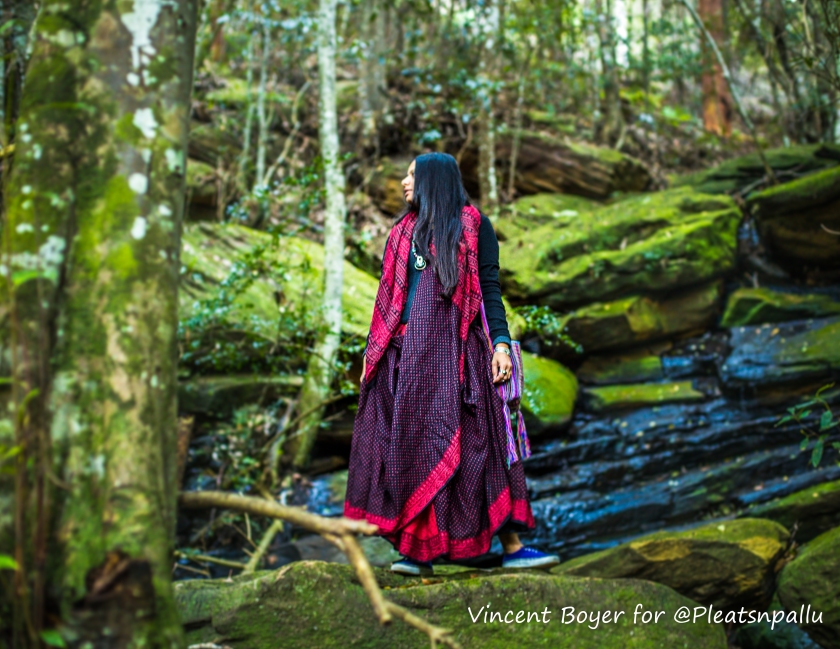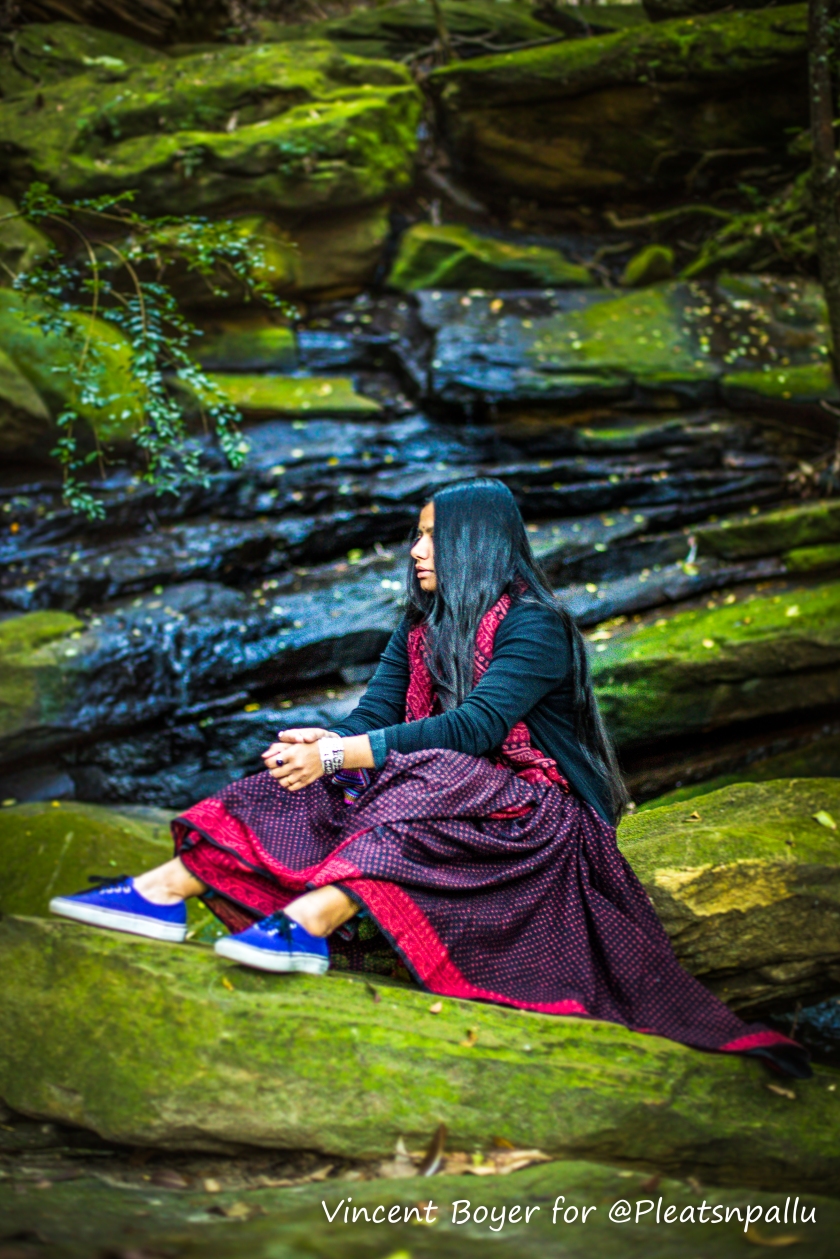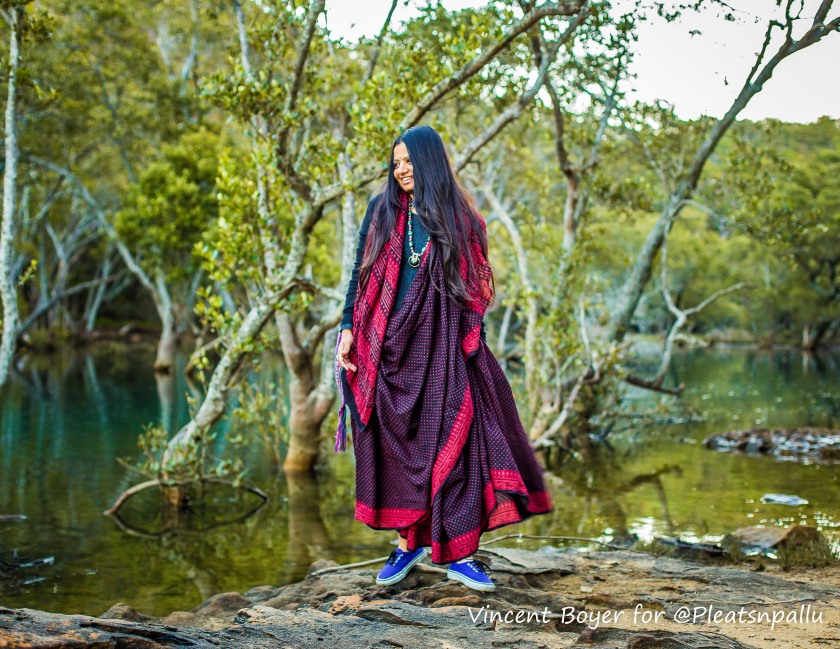Manual block printing on textiles using wooden blocks has been an artisanal craft practiced in India for centuries …



Photos: Vincent Boyer (Say hi on instagram @vincetravelbook)
Hand-block printing is one of the oldest and currently among the most popular forms of ornamentation on textile surfaces.
Based on available historical texts it is believed that printing designs onto fabric most likely originated in China about 4,500 years ago but it is on the Indian subcontinent where hand-blocked fabric reached its highest visual articulation.
Indian artisans of yore possessed unparalleled expertise in the secrets of natural plant dyes, particularly with mordants which are metallic salts that both create color and allow it to adhere to fabric.
Between outside influences from Persia and elsewhere, the impact of Mughal invasion and the diversity of the subcontinent’s own indigenous communities and tribes, India has one of the most spectacular pattern vocabularies on this planet.
The saree I am wearing the the photos features the Jawariya Dana, a tribal print from Tarapur, a village in Neemuch district in the central Indian state of Madhya Pradesh. It has a beautiful combination of alizarin hand block printing on the body and Dabu resist techniques on the border and parts of the pallu, displayed on mul cotton fabric.
Jawariya Dana is just one of the many styles of hand block printing from India and I thought I’d list a few of the types I wear quite often over a couple of posts here on Pleats n Pallu.
Jawaria Dana is colloquial speak for ‘jowar ka dana’ (a grain of sorghum or cereal grass), it is a traditional design term used for the block prints made on the odhanis (scarves) of women from the Bhils, Jats , Bhilals and other tribes of Rajasthan and MP.
They usually feature a red or pink (pink for the bride in kachcha colour, the colour is supposed to bleed and colour the bride pink) with small dots allover which are the size of grain of jowar.
Traditionally the danas would be made using the Indian tie and dye technique called bandhani however, these block printed ones are more common these days. A few local artisans in the area still follow the traditional bandhani technique to decorate odhanis and lugdas (body cloth).
These are sarees hand block printed and alizarin dyed in black and red . Blocks used are same as what the printers use for printing for the tribals so there would be misprints or defects as well.
Nandana is another elaborate style of manual block print practiced by the local Chippa community in Tarapur. It is a time-consuming, labor-intensive process involving about 16 steps to get to the final design.
Traditionally these prints decorate rough thick fabrics used for making ghagras (gathered skirts) for the women of tribal communities in Rajasthan, Madhya Pradesh and Gujarat. These prints have a limited number of block patterns, mostly flowers and fruits that are printed in the same manner all over the fabric.
I believe there are just five designs ranging from small buti to big buta known as mirch, champakali, dholamaru, amba and salaam are the signature motifs for these prints. You can see a saree featuring this print on a previous blog post here.
Dabu is a unique fabric art-form created by a mud resist process using wood blocks in the Bagru village of the western Indian state, Rajasthan. In this, a design is sketched onto the background cloth which is covered with wet clay sprinkled saw dust.
The saw dust clings to the textile as the clay dries and then the entire cloth is dyed in select colors. The parts with the clay and sawdust mixture do not catch the dye and remain colourless. The fabric is washed post dyeing and drying and may be dyed again in a lighter shade to cover the patterned area.
Traditionally this form of printing was environmentally non-toxic because it used no harmful or synthetic dyes.
You can see sarees featuring this print on sarees in previous blog posts here and here, on dress and shirts here, here and here.
The Bagru style of hand block printing is eponymously named after the village it has originated from, which is a short drive from Jaipur.
In order to created these prints an artisan first stamps the background block (locally known as gudh), followed by an outline block (the rekh) and finally the datta are filler blocks which complete the design.
On average, a printer uses a minimum of four or five blocks to etch one motif on a length of hand printed cloth.
It sometimes takes a couple of days just to carve and finish a single block, as the selection and seasoning of local woods is an elaborate process, specific to each pattern.
In Bagru, carvers often use woods like sagwaan (teak), sheesham (Indian rosewood), or rohida (desert teak or marwar teak) when constructing blocks. You can check out this print in an older post here.
There are many, many more types of manual block printing on fabric from Rajasthan, Gujarat, Andhra Pradesh, Tamilnadu etcetera that I will elaborate on, in another blog post.
2 thoughts on “Different styles of Indian hand block prints”